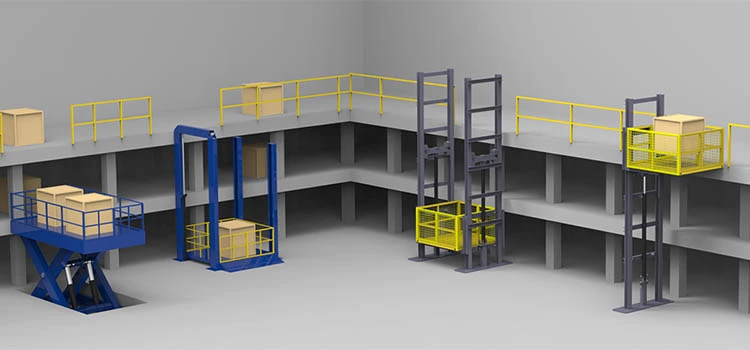Contrast Disabled Platform Lifts Prices UK: Affordable Options for every single Requirement
Contrast Disabled Platform Lifts Prices UK: Affordable Options for every single Requirement
Blog Article
Diving Into the Globe of Lifts: Usual Concerns Encountered by Various Lift Mechanisms
As we navigate via the upright transportation systems of modern-day structures, lifts stand out as a crucial component of our everyday lives. From hydraulic elevators to grip systems and machine-room-less designs, each lift type comes with its set of usual problems.
Hydraulic Lifts
Hydraulic elevators, typically liked for low-rise buildings, use fluid pressure to manage the activity of the lift cars and truck (lift repair companies). This system involves a hydraulic pump pressing oil into a cyndrical tube, triggering the lift to move in the wanted direction. While hydraulic elevators are understood for their smooth and silent operation, they do come with their own set of usual problems
One common issue with hydraulic elevators is oil leak. The seals in the hydraulic system can use out with time, bring about oil seepage. This not only develops a mess yet can additionally impact the lift's efficiency if left unaddressed. Furthermore, issues with the control system, such as malfunctioning valves or a malfunctioning pump, can create disruptions in the lift's motion.
Normal maintenance and punctual repairs are important to make certain the smooth performance of hydraulic lifts. By resolving these typical concerns proactively, structure owners can minimize downtime and make sure the security and effectiveness of their vertical transport system.
Traction Lifts
When considering vertical transport systems in buildings, one more usual kind besides hydraulic lifts is the grip lift. Traction elevators operate utilizing a system of ropes and weights that relocate the lift auto by clutching onto the hoist ropes. This system enables smoother and faster upright transportation contrasted to hydraulic systems.
Among the usual problems faced by grip lifts is rope wear. The consistent movement of the ropes within the traction system can lead to damage with time, potentially causing the elevator to malfunction or become hazardous for use. Routine examinations and upkeep of the ropes are important to make sure the elevator's appropriate performance and security.
One more problem that traction elevators may experience is connected to the control system. Issues with the control system can bring about issues such as irregular activity, hold-ups in response times, or perhaps total closures. Normal screening and maintenance of the control system are crucial to avoid such issues and ensure the elevator's dependability.
Machine-Room-Less (MRL) Lifts

One of the crucial parts of MRL lifts is the compact gearless traction maker that is set up within the hoistway. This maker successfully drives the elevator vehicle without the demand for large equipment discovered in standard grip elevators. Furthermore, MRL elevators usually make use of a counterweight system to stabilize the auto, additional enhancing their energy efficiency.
Despite their benefits, MRL lifts might face obstacles associated with repair and maintenance because of the confined space for tools setup. Accessibility for servicing parts within the shaft can be limited, calling for specialized training for professionals. Appropriate maintenance routines and normal evaluations are important to guarantee the ongoing smooth operation of MRL lifts.
Overloading and Weight Limitation Issues
Are elevators outfitted to handle excess weight loads successfully and safely? Straining and weight limitation concerns are essential problems in elevator procedures. Elevator producers style lifts with particular weight abilities to guarantee passenger security and devices long life. Going beyond these weight restrictions can bring about numerous problems, consisting of mechanical failings, hold-ups, and safety and security threats.
When elevators are overwhelmed, it puts extreme strain on the motor, cable televisions, and various other elements, potentially causing break downs or malfunctions. If they discover excess weight, safety systems such as sensors and overload sensors are in area to protect against elevators from moving. Additionally, surpassing weight limitations can lead to raised energy usage and deterioration on the lift system.
To reduce straining concerns, building supervisors should plainly show weight limits in elevators and enlighten owners on the value of adhering to these restrictions - lift repair companies. Normal upkeep checks by certified specialists can also aid guarantee that elevators are running within risk-free weight criteria. By dealing with overloading and weight limitation concerns proactively, building proprietors can enhance elevator security and performance
Electric System Failings
Surpassing weight limitations in elevators can not only lead to mechanical issues yet also possibly add to electrical system failures within the lift framework. Electric system failings are an important worry in elevator procedure, as they can cause unexpected closures, breakdowns, or even security hazards.
In addition, power surges or variations in the electric supply can also interfere with the elevator's procedure, impacting its efficiency and safety. These electric disruptions can harm delicate elevator parts such as control panels, circuit boards, or sensing units, leading to system failings. Regular maintenance and evaluations are essential to identify and resolve possible electrical issues immediately, guaranteeing the secure and effective operation of elevator systems. By sticking lift repair near me to weight limitations and performing routine electric system checks, structure proprietors can alleviate the threat of electrical failures in elevators.
Verdict

Hydraulic elevators, frequently chosen for low-rise buildings, make use of fluid stress to control the activity of the elevator cars and truck.When considering vertical transportation systems in structures, another usual type apart from hydraulic lifts is the grip lift. Traction lifts run utilizing a system of ropes and weights that move the lift auto by grasping onto the hoist ropes. Unlike standard lifts that need a separate equipment area to house the devices, MRL lifts integrate many of the parts within the shaft, getting rid of the requirement for a devoted equipment room.In final thought, lifts encounter usual concerns such as hydraulic malfunctions, grip system failures, and electric system issues.
Report this page